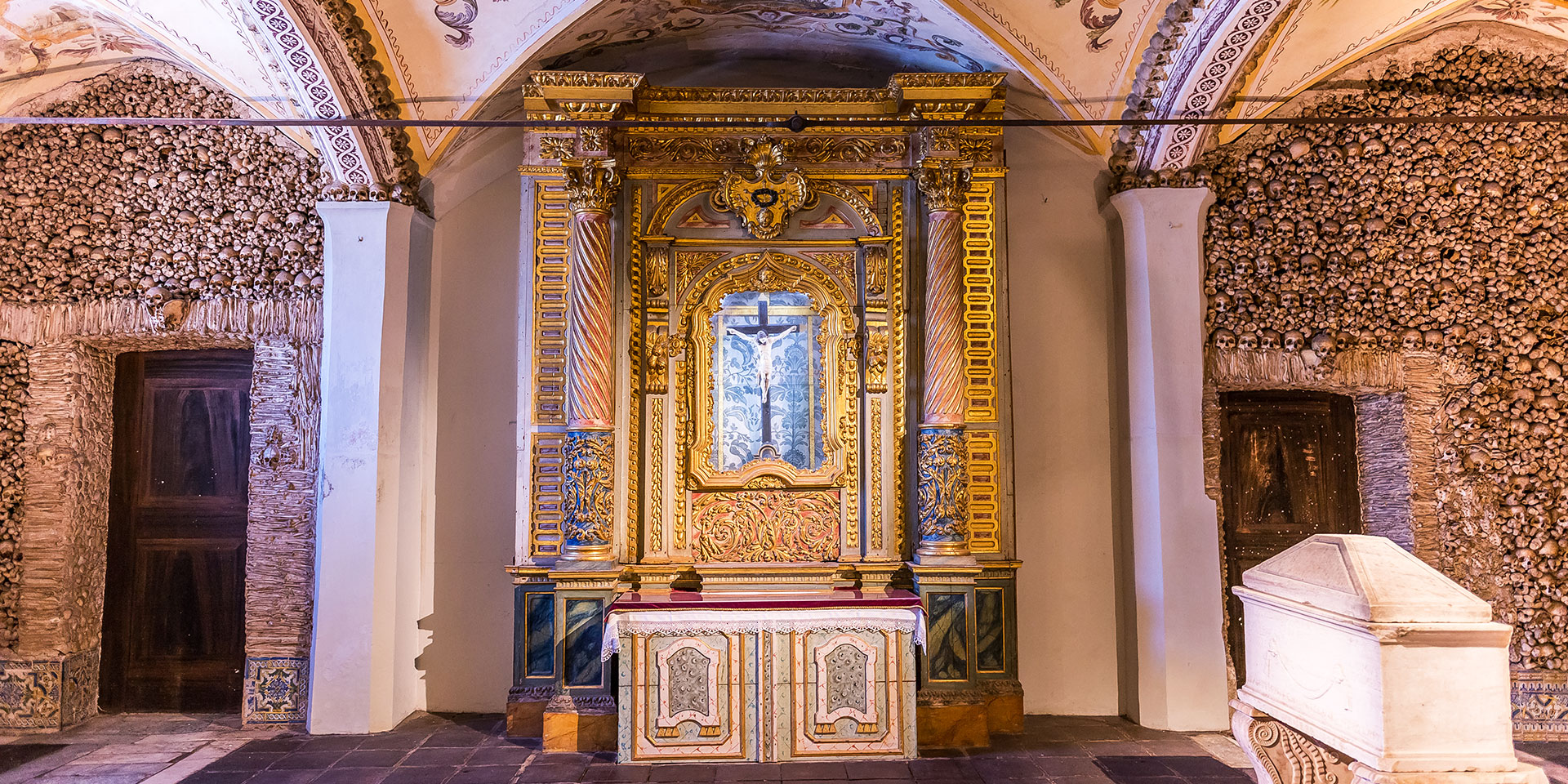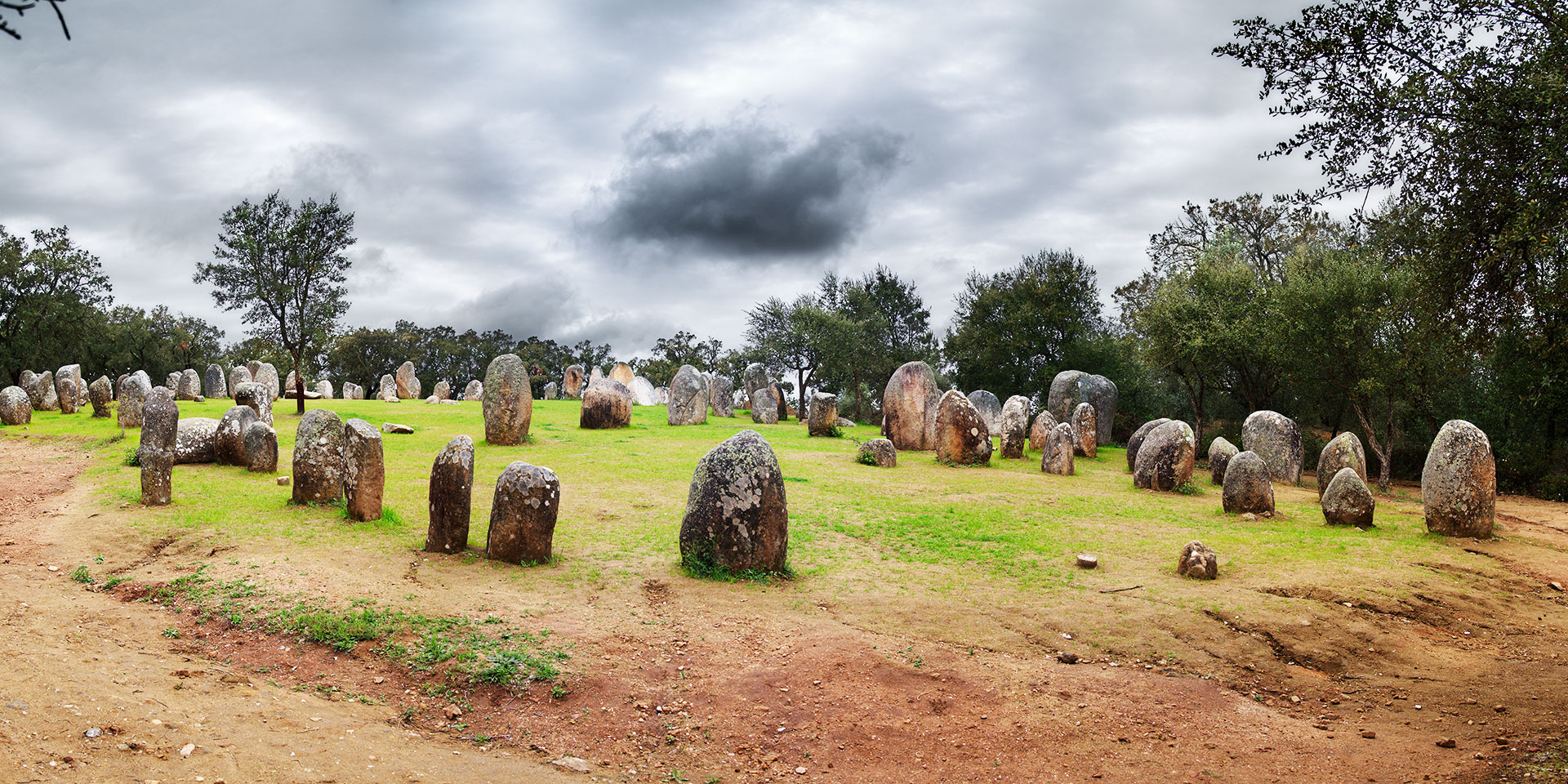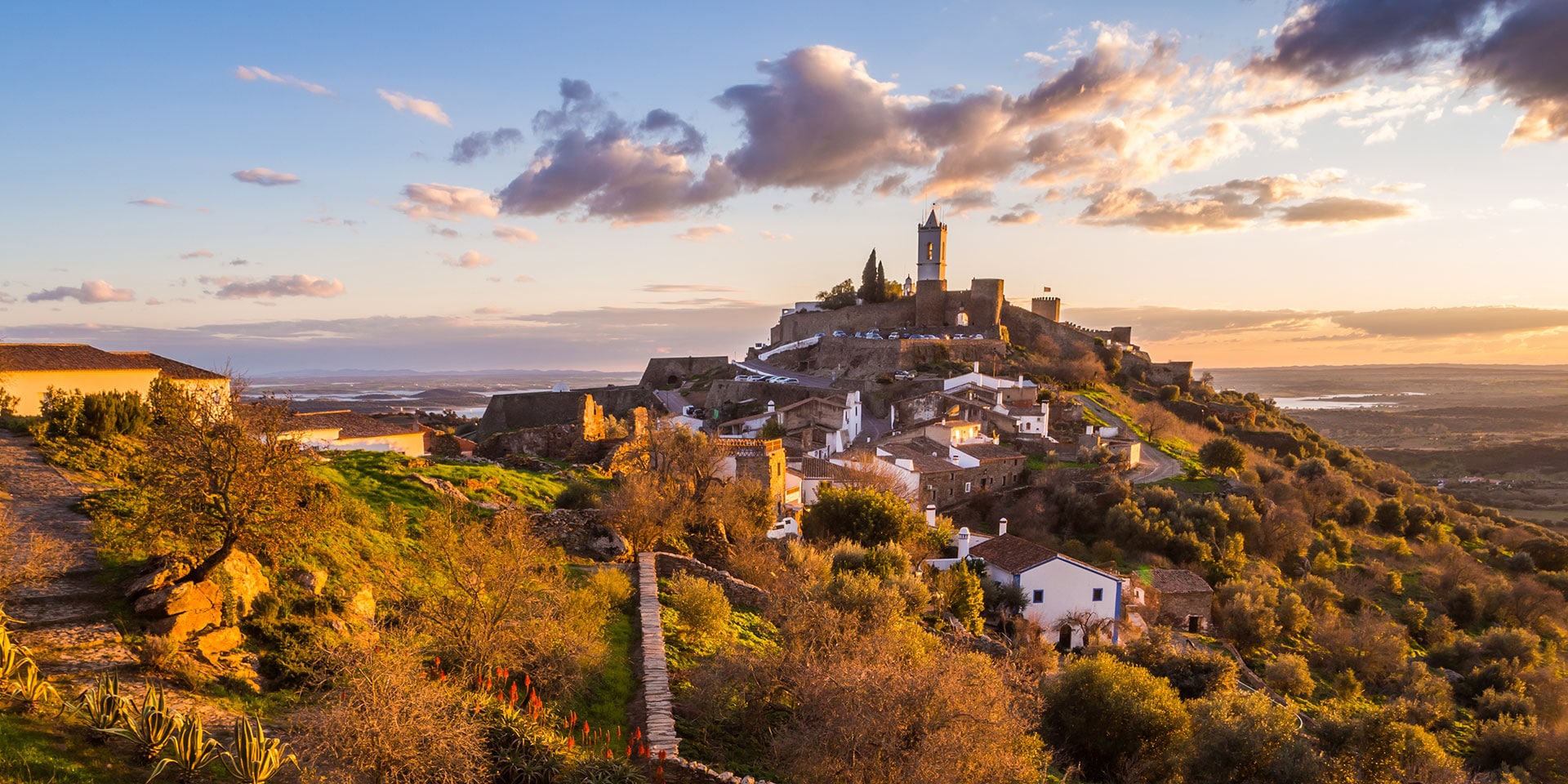Just 90 minutes southeast of Lisbon lies Portugal’s sprawling Alentejo region, where prehistoric ruins and ancient cities rise from the land, and a rich culinary scene flourishes.
Here, cork trees sprout from grassy fields and holm oaks dot the landscape, dropping their acorns and providing ample foraging for the (exceptionally tasty) black Iberian pigs that roam the region.
Alentejo also lays claim to eight distinct wine regions, where historic wineries are set in palaces built for mistresses and modern estates, and where they still make wine in amphora — tall, two-handled clay jars — just as they have for 2,000 years.
A Visit to Evora
All is not just vice in Alentejo. At its center is the historic city of Evora, built before Christ, then encircled in walls by the Romans, and now a UNESCO World Heritage site.

Here, cobbled streets spiderweb past whitewashed homes studded with wrought-iron balconies, shops selling cork goods, the ruins of the Temple of Diana and a smattering of exceptional regional restaurants. Come for the black Iberian pork or açorda — a bread and field-herb soup created during the Moorish occupation — stay for the egg-based desserts made popular by 15th-century nuns.
Such religious influence delivers one of Evora’s most fascinating finds: the Chapel of Bones, which is tucked inside the Church of St. Francis. In the 16th century, Franciscan monks began exhuming the city’s deceased residents to build this meditation space with a message to nobility. Now, some 5,000 skulls and femurs and clavicles comprise the walls and arches of the breathtaking sanctuary.
Where Wineries and Ancient Tradition Thrive
Beyond Evora’s Roman walls, more ancient history, and a burgeoning wine scene, flourishes. Only two regions in the world have been making wine in amphora continuously since the vessels were introduced by the Romans, and one of them is Alentejo.
You’ll see vessels dating back to before the Common Era, standing sentinel in wineries such as Dona Maria in the town of Estramoz. The winery is tucked within an 18th-century palace built by King João the fifth for his mistress, Dona Maria. The family who started this winery more than 150 years ago brought Alicante-Bouschet grapes to the region from France, which have become so central to this region’s winemaking that the grape is almost thought to be indigenous.
Amphora are also in use at such wineries as Herdade do Rocim, where the ancient vases seem an almost odd contrast to the very modern looking winery. Even at one of the region’s largest producers, Herdade do Esporão, amphora are still in play. Here, in addition to making tasty verdelho and more, they also press their own olive oil.
Artifact Spotting: Prehistoric Monoliths
Roughly 300 wineries are producing everything from antão vaz — a native white wine grape — to syrah. Many of these spaces are also adjacent to, or en route to, ancient artifacts, such as the countless menhirs — stone monoliths erected in prehistoric times — that rise out of the landscape across Portugal.

The most striking are Anta do Zambujeiro and the Cromlech of the Almendres. Just 10 miles east of Evora, Almendres features some 100 menhirs set in concentric circles, while nearby Anta do Zambujeiro is home to a megalithic tomb.
To the east, between Herdade do Esporão and the massive, manmade Alqueva Lake that straddles the border of Portugal and Spain, is the 10-foot-high, 7,000-year-old Menhir of Barrocal, which juts out of a grassy field at Herdade de São Lourenço do Barrocal, near the ancient city of Monsaraz.
Exploring Tiny Towns
As you travel toward Monsaraz, you’ll encounter the town of Sao Pedro do Corval, where the pottery tradition stretches back to prehistoric times. Today, block after block of potter’s shops, with their clay tile signs and striped earthenware, line the street leading up to the medieval city.
Set on a hilltop overlooking Alqueva Lake, Monsaraz has been occupied since prehistoric times. Once home to the Romans, it has been successively home to the Visigoths, Arabs, Moors, Jews and Christians. Today, the walled city is bookended by a castle and the arched porta da vila — the town door. In between, the whitewashed shops and homes gleam in the Portuguese sun, beneath a seemingly ever-blue sky.




